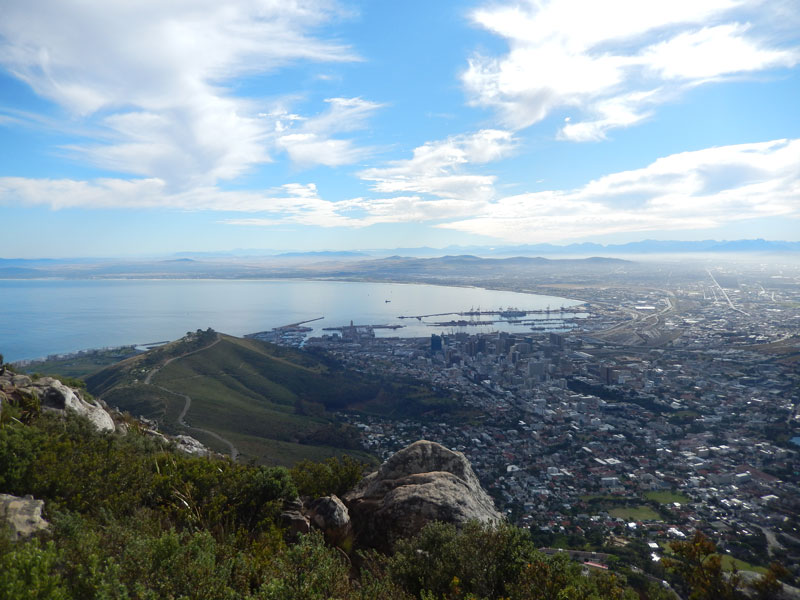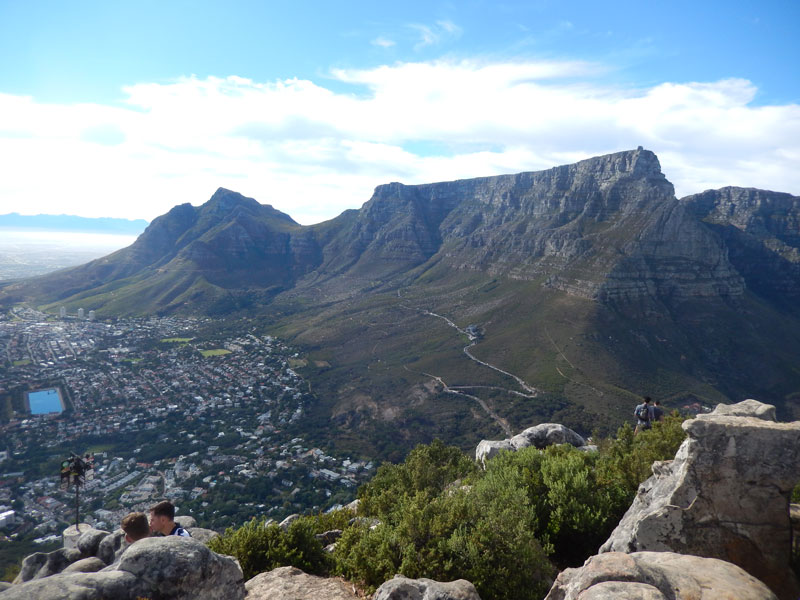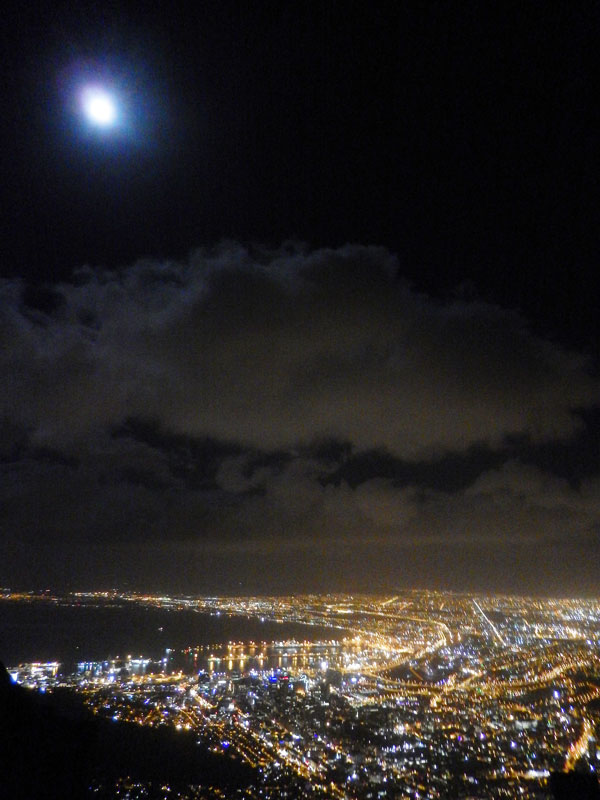The first mountain I scaled was Lion’s Head, which is the smallest of the three with its peak topping at 669 meters above sea level. Although the hike is relatively easy, initially I had to get used to the strain in my calves caused by walking uphill, which is a rather dissimilar experience from hiking in Flanders. The trail winding up Lion’s Head starts off at a relatively gentle slope before continuing in a slightly steeper part that requires you to take large steps over the rocks. Towards the summit there is a crossroads with the easy, recommended, route going to the left, and a route that requires some climbing going straight ahead. Hikers with the bare minimum of athletic capacities should not be deterred by the warnings though, as there are handholds and chains fixed into the rocks to facilitate the climb. The hardest part was not the climb itself, but rather stifling my eagerness while waiting in line because some clumsy people were holding up everyone else from passing with their struggling.

The view westward to downtown Cape Town.
I had started my hike at the foot of Lion’s Head at 8:00, and reached the top slightly over half an hour later. Despite the relatively early hour I had passed dozens of slower people on the way up and crossed some people that were already descending as well, and likewise the top was quite crowded. I idled a bit on the top, enjoyed the view of Cape Town, and ate an apple. Instead of going down, next I walked to the opposite side of the mountain from where I came up and scrambled down a few dozen meters until I was out of earshot from the crowds. Here I settled down to enjoy the morning sunshine and read for an hour to finish my book.

The view eastward to Table Mountain.
Afterwards, instead of going back to the laid-out trail I decided to be adventurous and try to go down the mountain starting from that spot. I had to carefully watch my footing, and the descend included some free climbing bridging heights of 1-3 meters (those few bouldering sessions with my colleagues in Antwerp payed off!) as well as some cautious jumping down when no suitable holds presented themselves. I had to be very careful as even a small misfortune such as twisting my ankle would have meant trouble, while more serious accidents could be caused by even the slightest moment of inattentiveness or overconfidence. I relished the mental challenge of trying to find the best path and the physical challenge of climbing down though. It took me some time, but I successfully managed to get down and I rejoined the hiking trail downwards off the crossroads splitting the trail in the easy and trickier part. Some hikers looked up in surprise when I emerged all of a sudden from between the bushes from yet a third direction. Afterwards, the rest of the way down was a breeze.
I hiked Lion’s Head a second time a few weeks later, this time at night. This is a popular activity for the locals at full moon, and I judged the occurrence of the largest supermoon in 70 years the perfect occasion to do this as well. I had brought my flashlight, but the moon shone so bright that I did not even need to turn it on on the way up. This time I was able to reach the top even faster because unlike the previous time there were no huge crowds, although I passed a few people who were going down, while at the top a group of youngsters were having a late night picnic. From this vantage point I enjoyed the unique view of Cape Town by the light of the full moon. For safety on the way down I did not engage in any free climbing this time and used my flashlight, as the descend was made tricky by the very strong wind, which is typical for Cape Town, and which was blowing so hard I sometimes even threatened to lose my balance. I got down without any real problems though, and I was glad I undertook this new adventure.

No werewolves were sighted.